As the development of our current CubeSat mission is getting closer and closer to space, we take the opportunity here to give a review of what has already been achieved and to show the next steps. In addition, we can already give a preview of the launch, which has also been fixed in the meantime.
Now, 21 people are working on the design of the subsystems (hardware and software), the integration of the CubeSat, and the mission design. Since the kick-off of the mission in August 2020, many other people have also been involved in the development, with special thanks also going to our reviewers, sponsors and partners.
System Architecture and FlatSat
The first review was of the system architecture, as this provides the basis for how the subsystems work together. After the architecture was thankfully reviewed and accepted by our reviewers, we started developing the subsystems. As shown in Figure 1, the individual subsystems were installed on a large PCB (FlatSat). Such a setup allows for user-friendly simulation of the satellite on the ground. Since the FlatSat is also connected to the Internet, software can be tested on it at any time, and from anywhere.

In the course of commissioning, the basic function of the individual subsystems was tested using simple scripts. After these “smoke tests” were successfully carried out, it was then possible to start with the Communication and On-Board Computer (COBC) software, which is based on the “Rodos” operating system. Rodos is a real-time operating system (RTOS), which was developed by the University of Würzburg at the Chair of Aerospace Information Technology (Prof. Sergio Montenegro). In the course of the system architecture review, we defined the dataflow from the ground to the CubeSat in a playful way with the help of a “Dataflow Game”, which also resulted in the software architecture that can now be developed.

Furthermore, the FlatSat now helps us to test and evaluate new versions of the subsystems as well as software concepts. This also includes long-term tests under controlled conditions, as well as the targeted manipulation of subsystems to simulate errors that could possibly occur during the mission. Thus, we will continue to operate the FlatSat after launch to replay scenarios and test various functions.
In addition, we have already been able to test the basic mission with the help of the FlatSat and the current subsystem versions: That is, running a Python script to read out various sensors and the communication between the COBC and the education payload, which consists of the Raspberry Pi and the sensors (EDU). The setup was also run completely energy autonomous to test the function of our Electrical Power System (EPS).
Figure 3 shows the demonstration and visualization of sensor data at the Long Night of Research 2022 in Vienna.
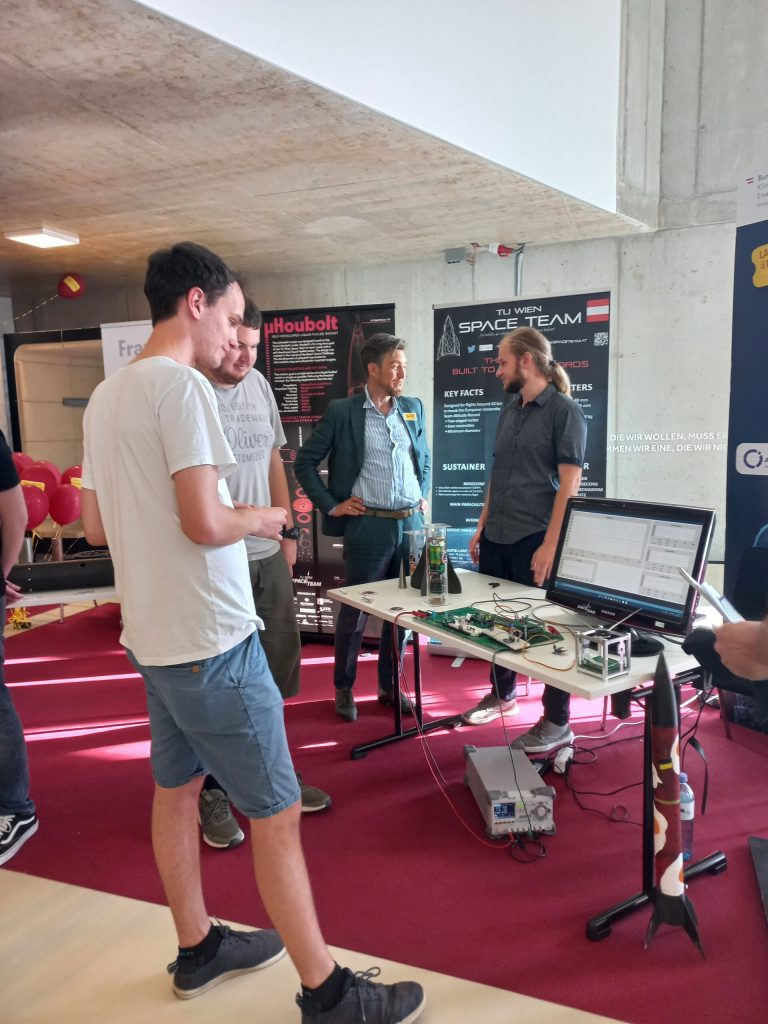
Ground Station
Since we of course want to communicate with the CubeSat, we got to work and started with the construction of our ground station. This shall be based on the open source project SatNOGS. In addition, the concept of the SatNOGS ground stations will be offered in schools and satellite communication will be taught to students. It should also be noted that this ground station can be used to receive any satellite data and can therefore be operated independently of our CubeSat mission.
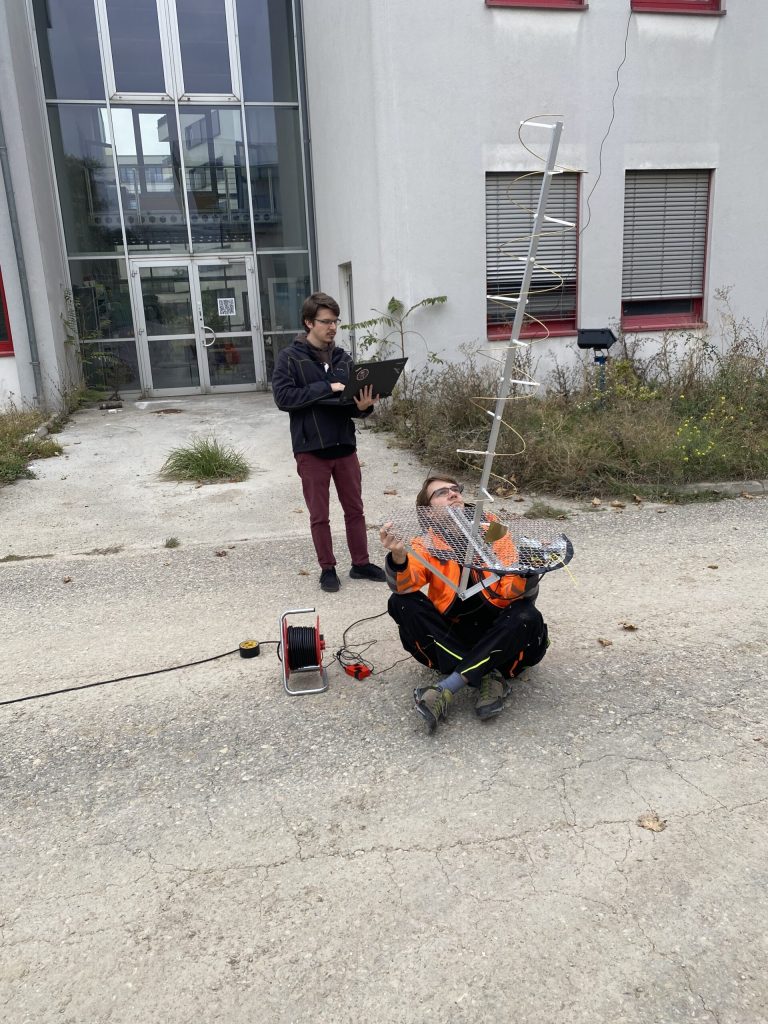
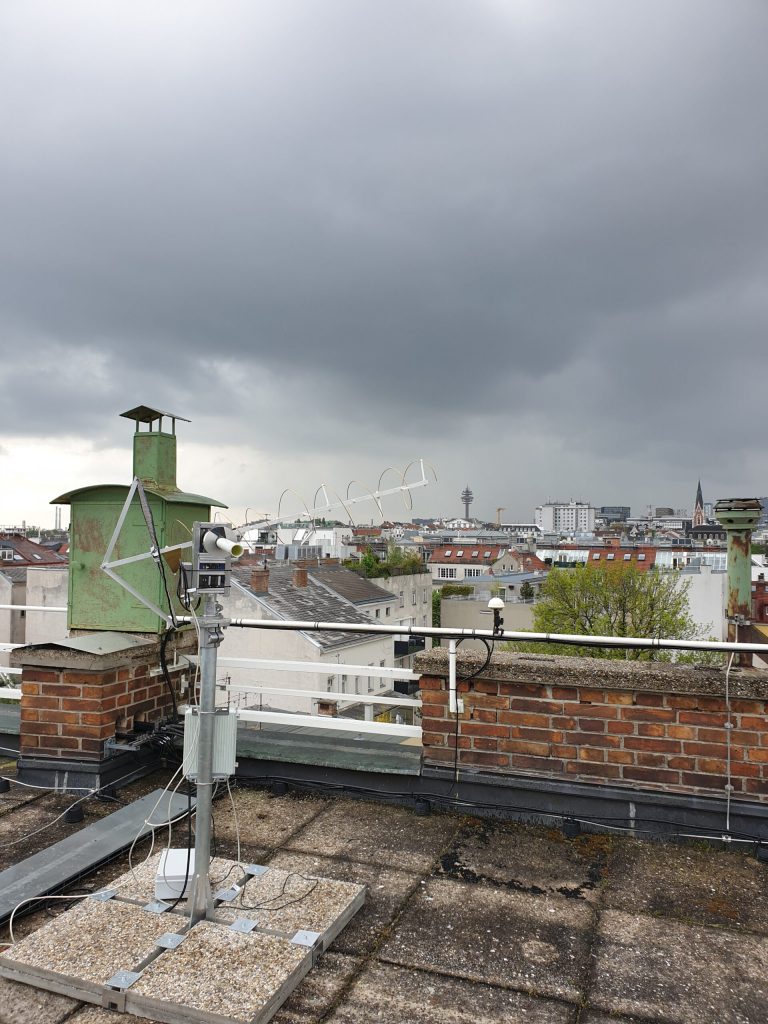
Thanks to Prof. Mecklenbräuker from the Institute of Telecommunications at the Vienna University of Technology we were able to find a suitable location for our rotatable SatNOGS ground station on the roof of the electrotechnical institute. Since June 2023 this ground station is online (Link to our SatNOGS ground station: https://network.satnogs.org/stations/2926/). In parallel to the development of the rotatable ground station, which follows the satellite on the horizon, we are currently engaged in the construction of a stationary, smaller antenna. By using software-defined radio (SDR; Hack RF One) we use a quite flexible system to operate different antenna concepts.
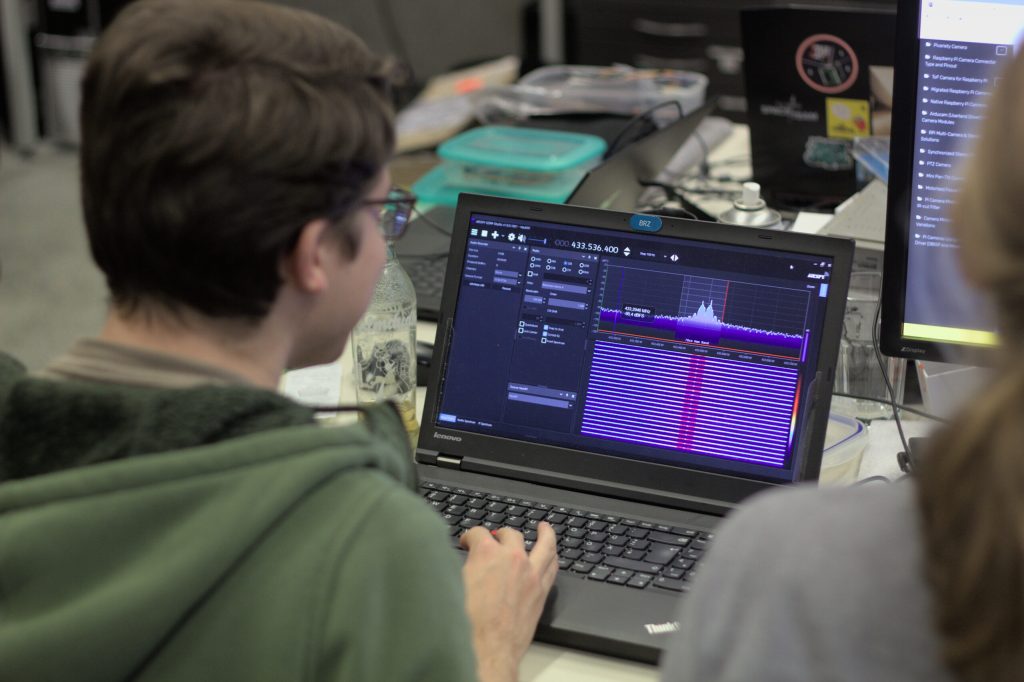
Current Status and Education
At the moment, we are busy getting the subsystems and the whole CubeSat hardware into a flight-ready state. On the one hand, the antennas have already been measured (Figure 6). Special thanks go to Seibersdorf Laboratories for their great support and for performing the measurements. With the help of the extracted data, an application for frequency coordination has already been submitted, which, after successful verification, entitles us to operate on the desired frequency band.
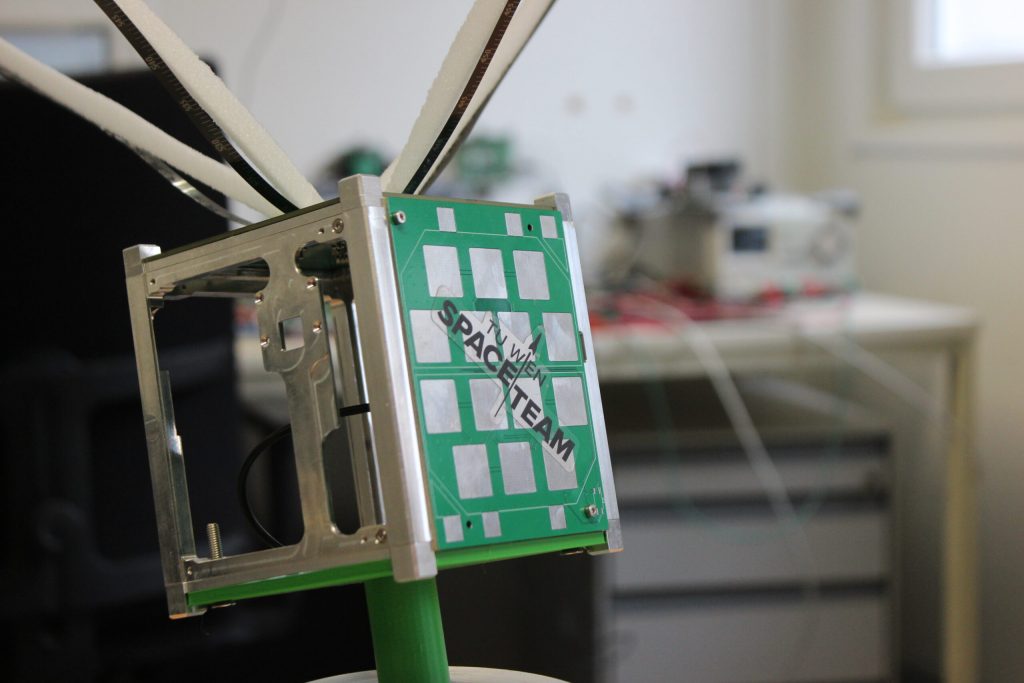
From the point of view of the individual subsystems, we are busy realizing the final hardware implementations in order to then perform the various tests, such as shaker tests (which simulates the launch of the CubeSat) or thermal vacuum chamber (TVAC) tests. Here it is particularly important to ensure the correct PCB materials and requirements, as well as a space-conform assembly, as we have so far concentrated purely on the function of the individual subsystems. Here, we have found a cooperation partner in tgm and DI Christian Fuchsberger, who are very grateful for their support. In addition, the most important software functions, both on the COBC and EDU (Raspberry Pi) side, are being refined to ensure reliable operation in space.
To test the functionality of the CubeSat and especially the RF communication we will perform a high altitude flight on board of a weather balloon together with the Space Team of the University of Stuttgart KSat e.V.. This should help us to get a better understanding under autonomous conditions, in order to then implement these findings in the flight hardware and software. For this purpose, all hardware has to be integrated into the 10 x 10 x 12 cm CubeSat and wired (see next chapter).
So that schools can already be integrated, we have already developed and manufactured Raspberry Pi hats. These boards can be plugged onto the standard Raspberry Pi and contain the most important sensors that can also be found on board the CubeSat. This allows students to develop their experiments without having tactile access to STS1. After successful testing of these experiments on the ground, they will be executed in space by STS1. In addition, Python libraries have already been prepared to ensure the easiest possible start and to guarantee the function on the CubeSat. Figure 7 shows an equipped EDU hat.
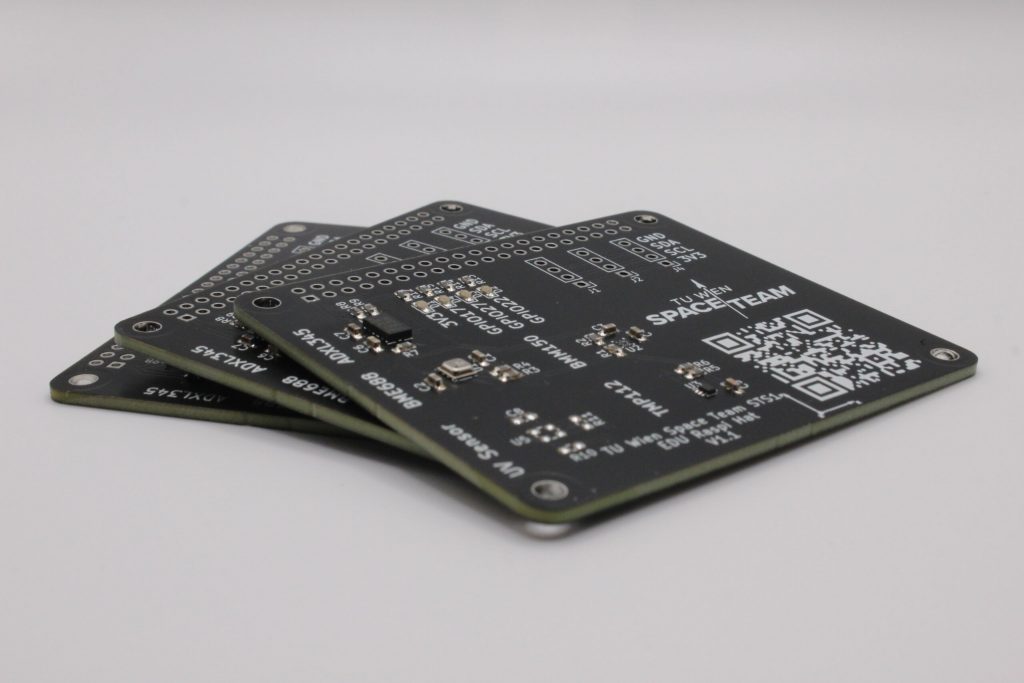
Integration and Testing
Here we have already started close cooperation with the HTL Leonding, HTL Rankweil and the tgm and in the course of this started diploma thesis topics in cooperation with dedicated teachers. Especially the construction and operation of SatNOGS ground stations, as well as the actual software experiments have already met with approval. In addition, this cooperation allows us to closely coordinate our actual mission, which is currently under development.
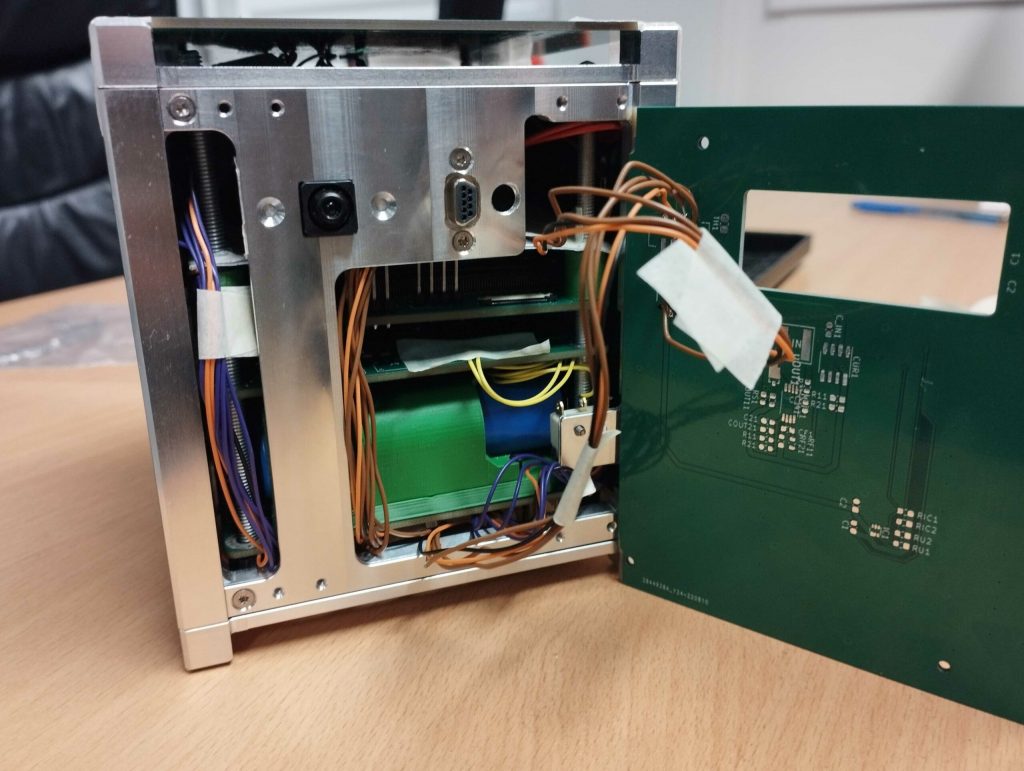
In addition, we will integrate a dosimeter that can measure radiation in space. The design, as well as the actual integration of the dosimeter within the CubeSat will be done by Seibersdorf Laboratories. We are really pleased to be able to offer this sensor to the participating students for their experiments.
Figure 9 shows the complete CubeSat flight-ready.
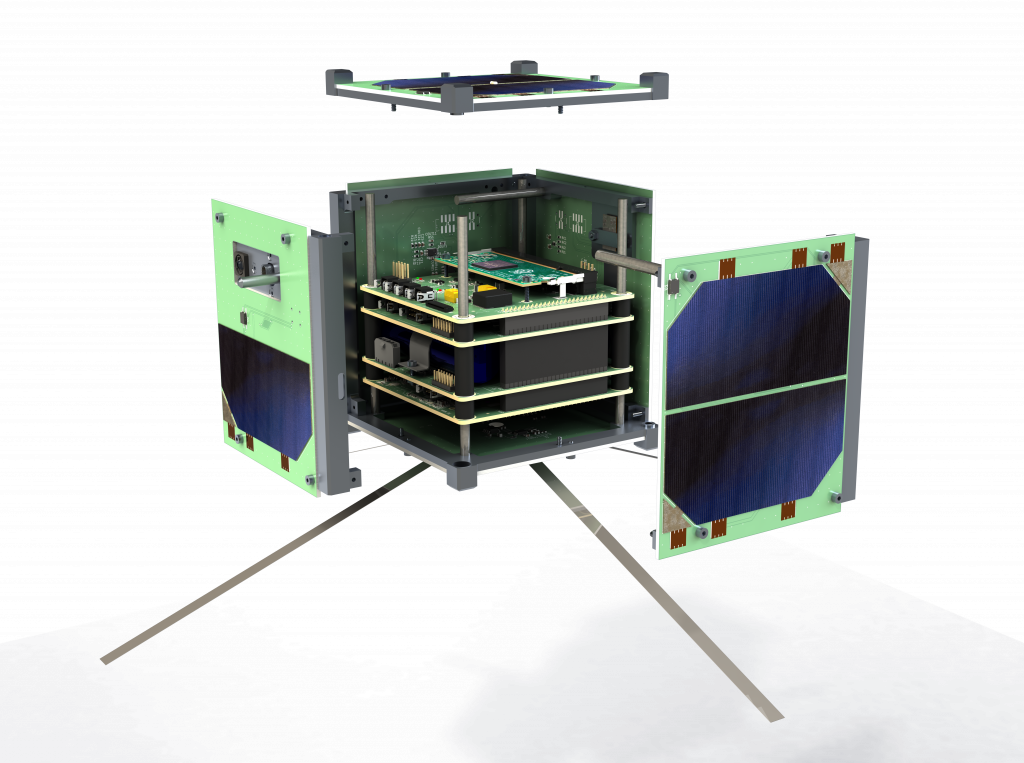
After the successful high-altitude flight at the end of summer 2023, as well as the tests, the actual flight hardware will be ordered and manufactured. This will then be subjected to further tests and a CubeSat will be operated continuously on the ground to find possible errors. At the moment, we expect the fully integrated and flight-ready CubeSat by fall/winter 2023.
Launch
In 2022, we participated in the Microlauncher Payload Competition of the DLR (German Aerospace Agency) and won a place in the second Spectrum rocket from isar aerospace. This is expected to launch in 2024. We were able to see this for ourselves in April 2023, when isar aerospace hosted a Customer Day. At this event, all rocket passengers presented their mission. In addition, isar aerospace took the opportunity to present their impressive factory halls and the current status of the Spectrum rockets.
isar aerospace is already considered the European answer to SpaceX, and is being promoted by leading industry and government figures. We are of course very pleased to be part of the New Space movement here, and to be present at isar aerospaces first launches.
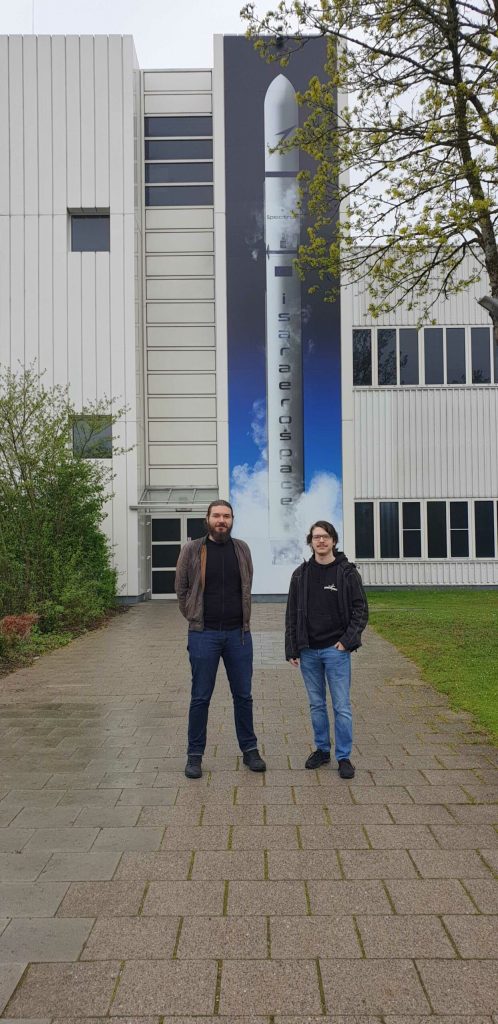
Link to CubeSat content on spaceteam.at: https://spaceteam.at/en/sts1-en/